Review and images by Saarlooswolfhound; edited by bmathison1972
Another trip along the holiday trail, a hell hound has arrived on the scene for presentation… Not truly, instead, I have a very precious Kaiyodo Asahiyama Exclusive black phase wolf model. Reused from the Choco Q Animatales model #239 from series 11, the mold itself is precisely the same besides a color change. Unfortunately, I could not find much information for this specific model. Perhaps it really was exclusive! I did include photos of the capsule info sheet included with the model. Without further ado, the analysis of this spooky Hell Hou- ahem -black phase gray wolf (Canis lupus) is to follow.
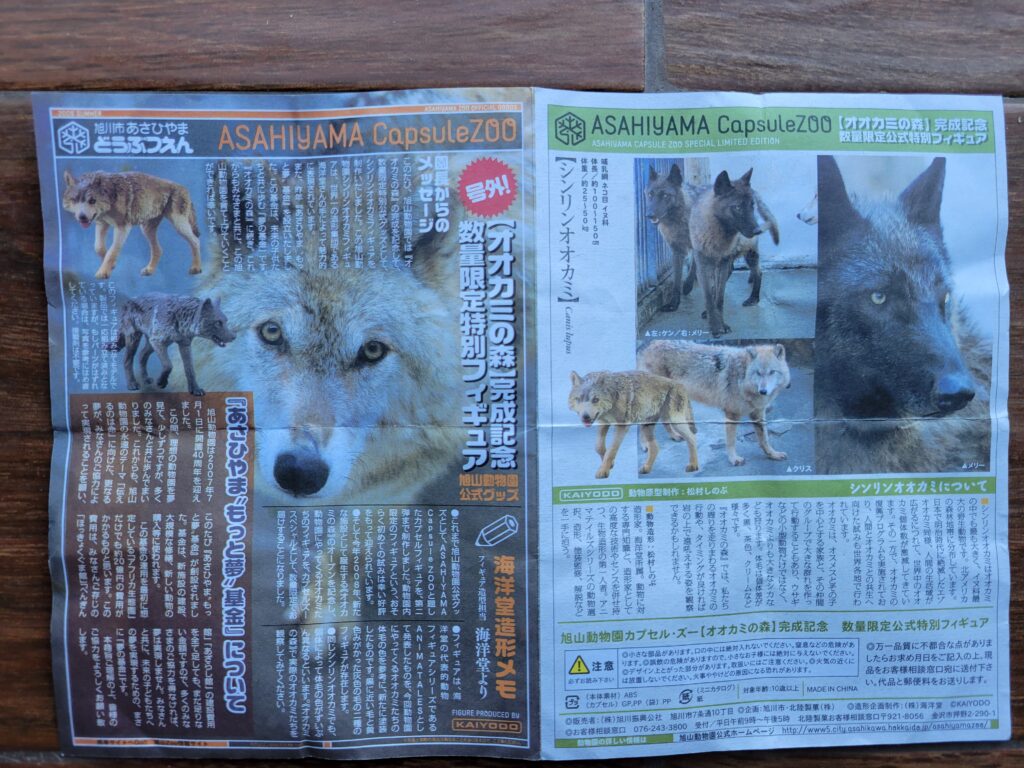
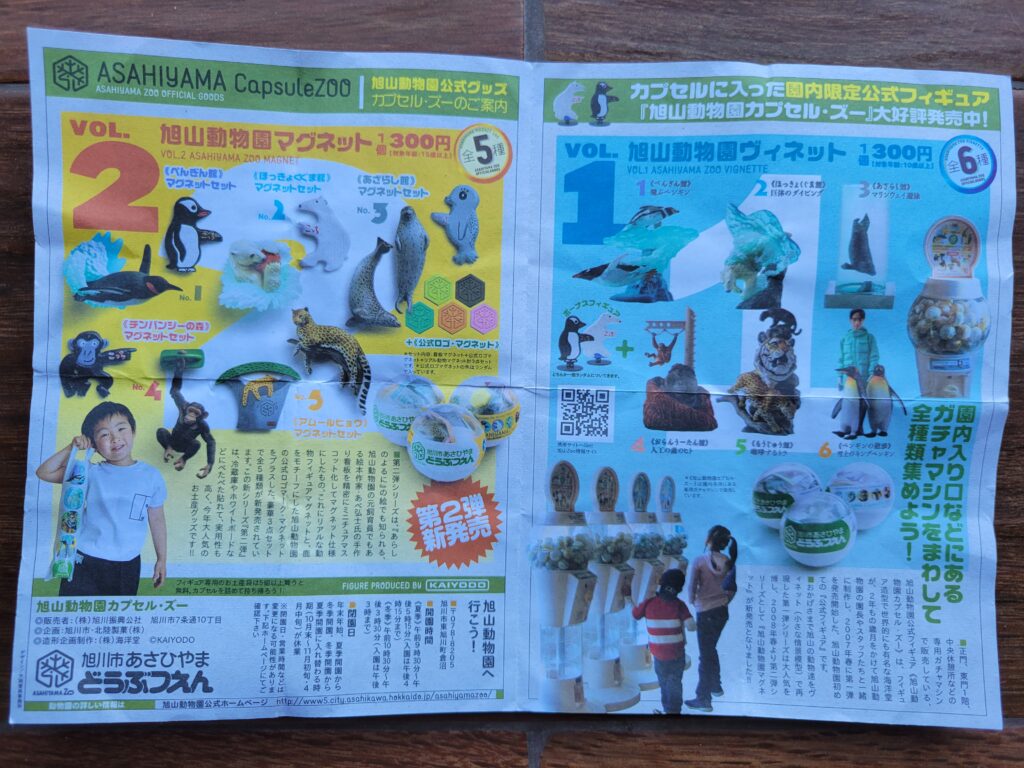
The model itself is a puzzle; including 6 pieces to place together. The puzzle itself is not difficult, however, the hind leg of this model of mine tends to be loose enough to fall apart and would benefit from gluing. My regular run of this model does not share this issue, so this is likely an individual item issue rather than a trait. This canine trots at about 1 ¼ by 2 ¾ inch (or approx. 3.18 x 6.9 cm). The coloration here is rather more accurately sooty gray, the dorsal region being a shade darker than on ventral areas, with the paws being a shade in-between both. It also flashes a lighter, nearly white, highlight along the hind portion of the shoulder and ruff; again, very realistic of real animals. The mouth is parted in a sculpted pant, pink tongue hanging out slightly forward of the muzzle, backed by yellow eyes so small in scale you can hardly tell the color! The scale of these small Japanese creations and their intricate paintwork always astounds me. I am unsure of the production time frame for this piece, but the words “special edition” and “exclusive” would indicate that it is part of a limited run.


Now, on to the mythological roots of the dark hell hound. Typically, presented as either a guardian or servant of Hell, the Devil, or the underworld, portrayals of similar animals are included in cultures and stories from around the globe. Perhaps the most famous would be the Greek Cerberus, generic “black dogs” from British stories, of Fenrir or Garmr from Norse myths. All of the above being animals of great strength, cunning, and some vague association with the afterlife. Cerberus and Garmr in particular, are guardians of Hell’s gates for their respective masters. Fenrir and his sons Hati and Skoll are all perpetrators for the events of Ragnarok. Meanwhile, the “black dogs” (Black Shucks, etc.) of England historically were considered the souls of canines buried first in a new cemetery area. This was done under the belief that the first body buried would have its soul trapped forever and doomed to either shepherd souls into the afterlife or are described as sinister and violent attackers. These sorts of stories appear nearly everywhere you look for them, representing domestic dogs or fiendish looking wolves such as the model presented. Some other locations to research further if you wish would be nearly anywhere in Europe, Latin America, early colonization of the US, Arabia, India, and Japan. Each region mentioned has their own mythology of mysterious canids.
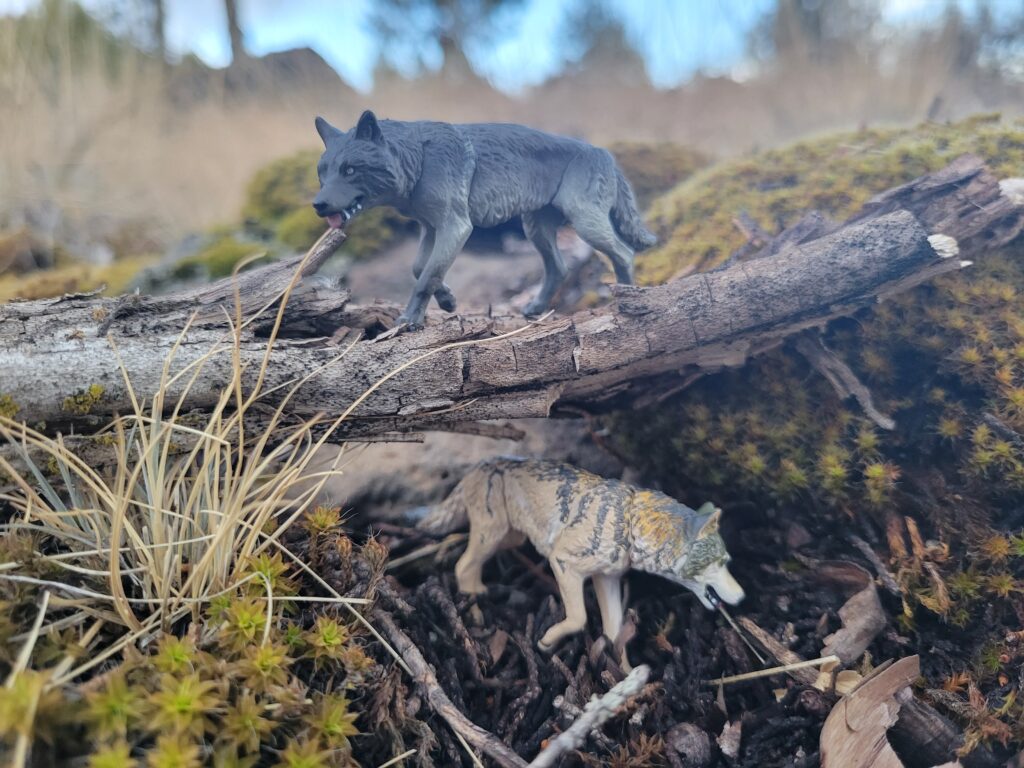
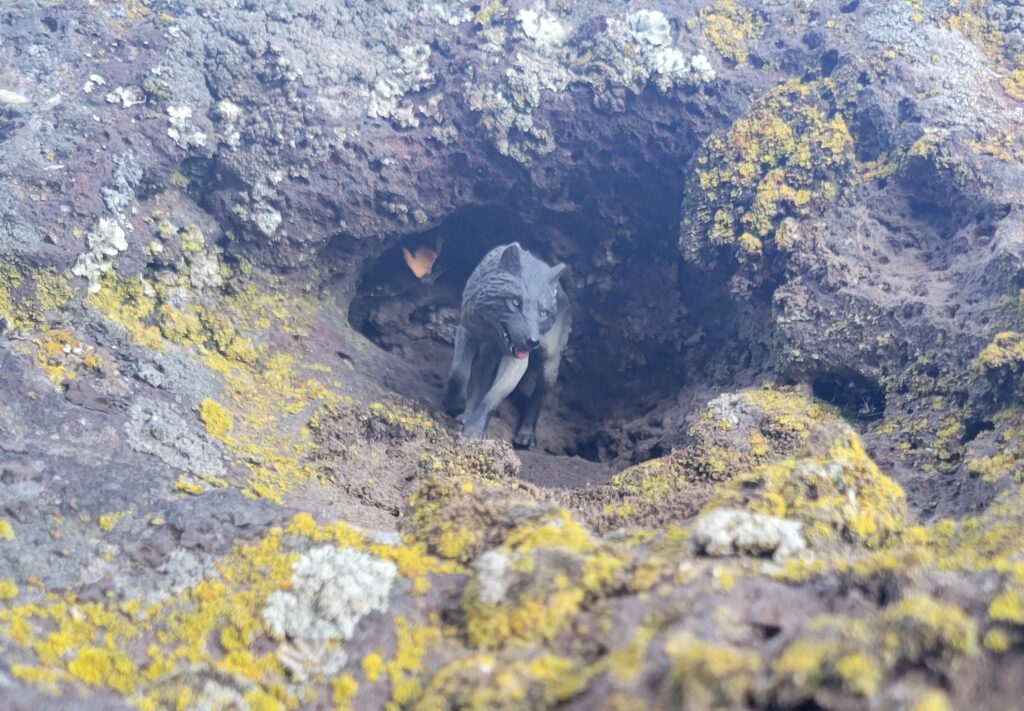
Moving on to the real hard facts, a black “phase” wolf is more properly described as a melanistic color variant. There is no particular species (or more accurately explained today as “varieties”) that tends to be black in color more frequently than others, it is simply a mutation. A genetic study at Stanford University School of Medicine and the University of California, Los Angeles, found the genetic mutation to have occurred in domestic dogs and introduced into wild Gray Wolf populations through hybridization. Thus, the color itself is not spectral nor supernaturally related, it is merely the phenotypic result of canines interbreeding. The animals themselves are true gray wolves in every other respect. The original classification however, listed by Linnaeus himself, was Canis lycaon under the assumption that the different coat color indicated subspecies (varieties) differentiation. As it is understood now, black phases can occur in any population of wild wolves (including the red wolf and even Indian wolf), challenging the idea of if it occurred in domestic dogs and was reintroduced into wild wolf populations, or the mutation originally occurred in ancient wolves and has survived sporadically since. There is no commonly understood reason for why a black coat would be beneficial in any habitat. Even so, the coloration is considered quite rare in Europe and Asia (historically as well as contemporarily), though melanistic individuals have been documented in isolated populations in India. Meanwhile, the Yellowstone National Park reintroduced animals appear around half of the time to be melanistic. Melanistic wolves are often born dark, not necessarily black but would darken with age, then continue to become gray. Perhaps the most famous individual would be the wolf known as Number 21 in Yellowstone National Park (the alpha male for the Druid Peak Pack). We have discovered that with the more recent occurrence of a domestic dog relative or ancestor, the longer the newer animal will hold on to its dark coat and reduce the rate of graying.
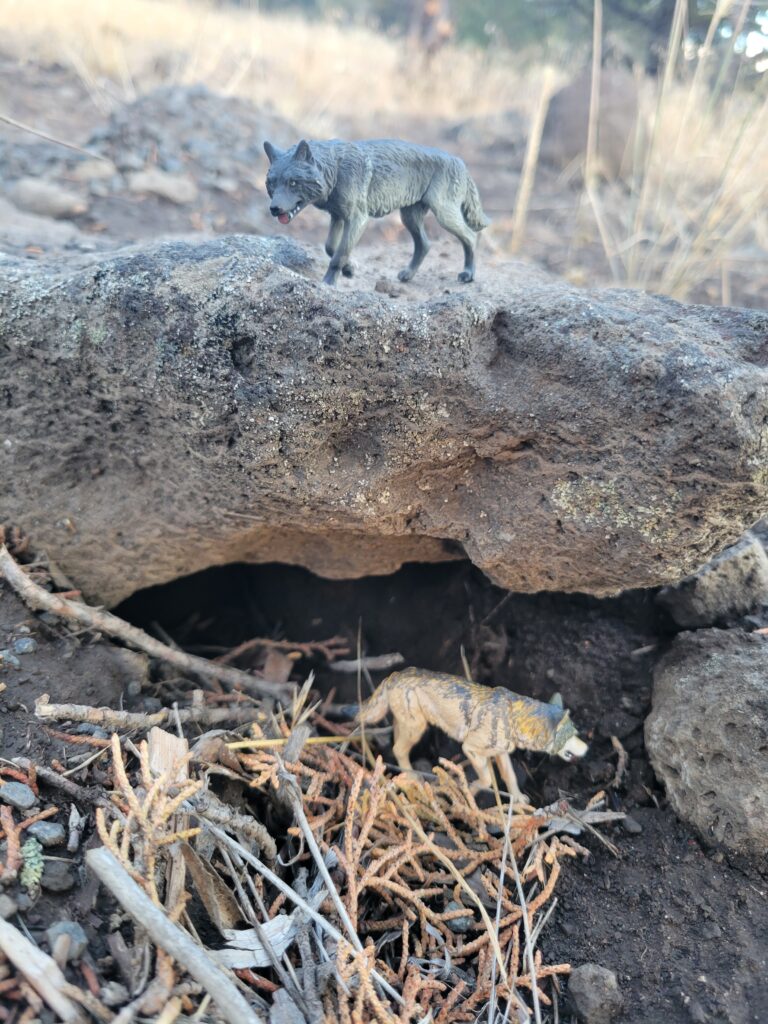

Lastly, my analysis of the model itself would be that any wolf lover or wild canine enthusiast should seek this model out for their collection. While being small and a puzzle figure, the sculpted details themselves make up for any detraction. Fantastic fur texturing really brings out the longer haired portions of the animal like its ruff, tail, and fringe around its face. Skeletal structure is apparent in the sculpting of the legs, presenting wonderful proportions for the ankle and wrist skeletal elements, as well as some finer detailing of the facial structure. Such details are often lost in other sculpts. The ears are half pricked, indicating interest in whatever is in front of it but also trying to catch any audible indicators in its surroundings. There are even small paws with individual toes and nails. The only real critique from myself would be the mouth. The tongue is very wide. While realistic of canines, it is sculpted or painted in a way that makes it appear thick while the teeth are also painted on. While distracting for a canine fanatic, it can be easily forgiven (as can be the puzzle seams) due to its size complicating miniscule painted detailing and other features of high quality and realism. All in all, it is a truly wonderful figure of a canine, and a lovely representation of a melanistic animal that is not just painted as flat black and instead incorporating the splendid shades of the real beasts. If you have a chance to add this model to your collection, I recommend you guard it as faithfully as a Hound of Hell! Have a spooky Halloween!

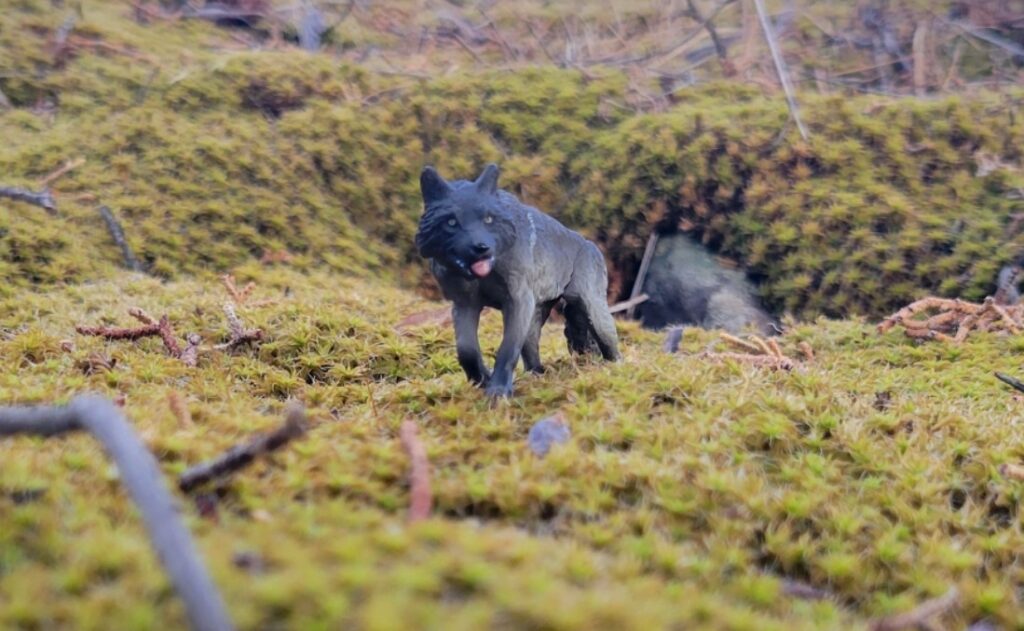
Disclaimer: links to Ebay and Amazon on the AnimalToyBlog are affiliate links, so we make a small commission if you use them. Thanks for supporting us!



